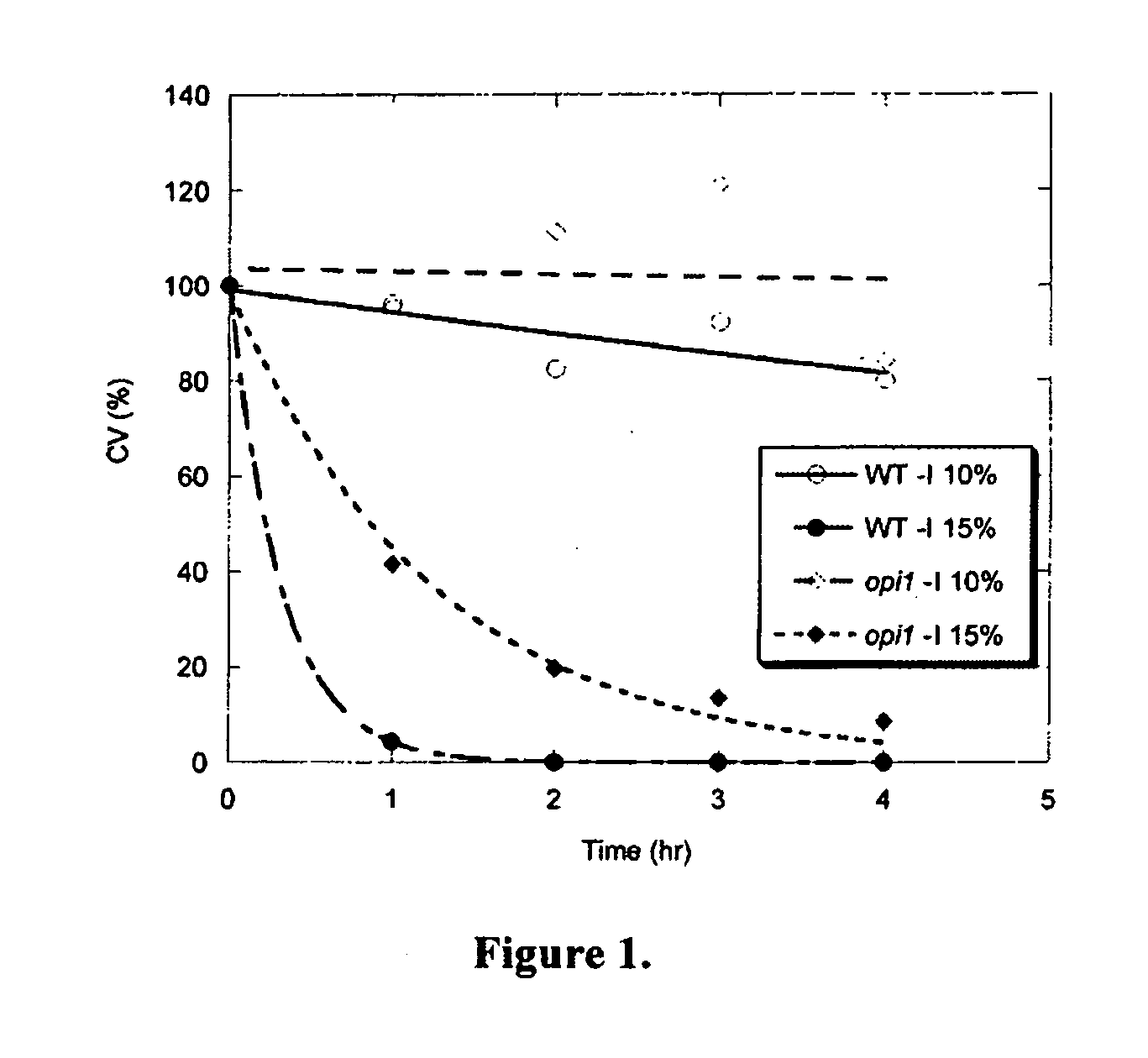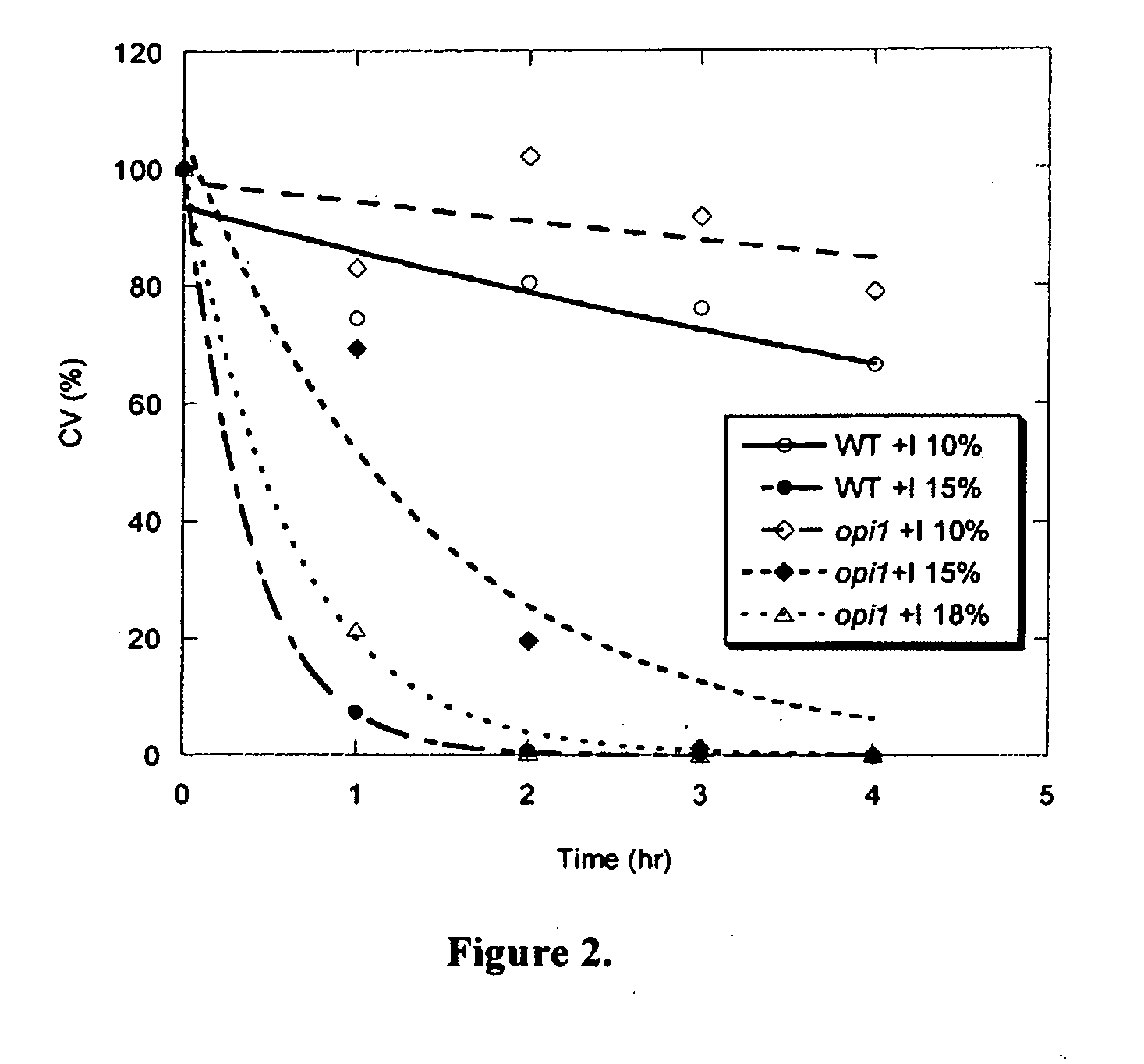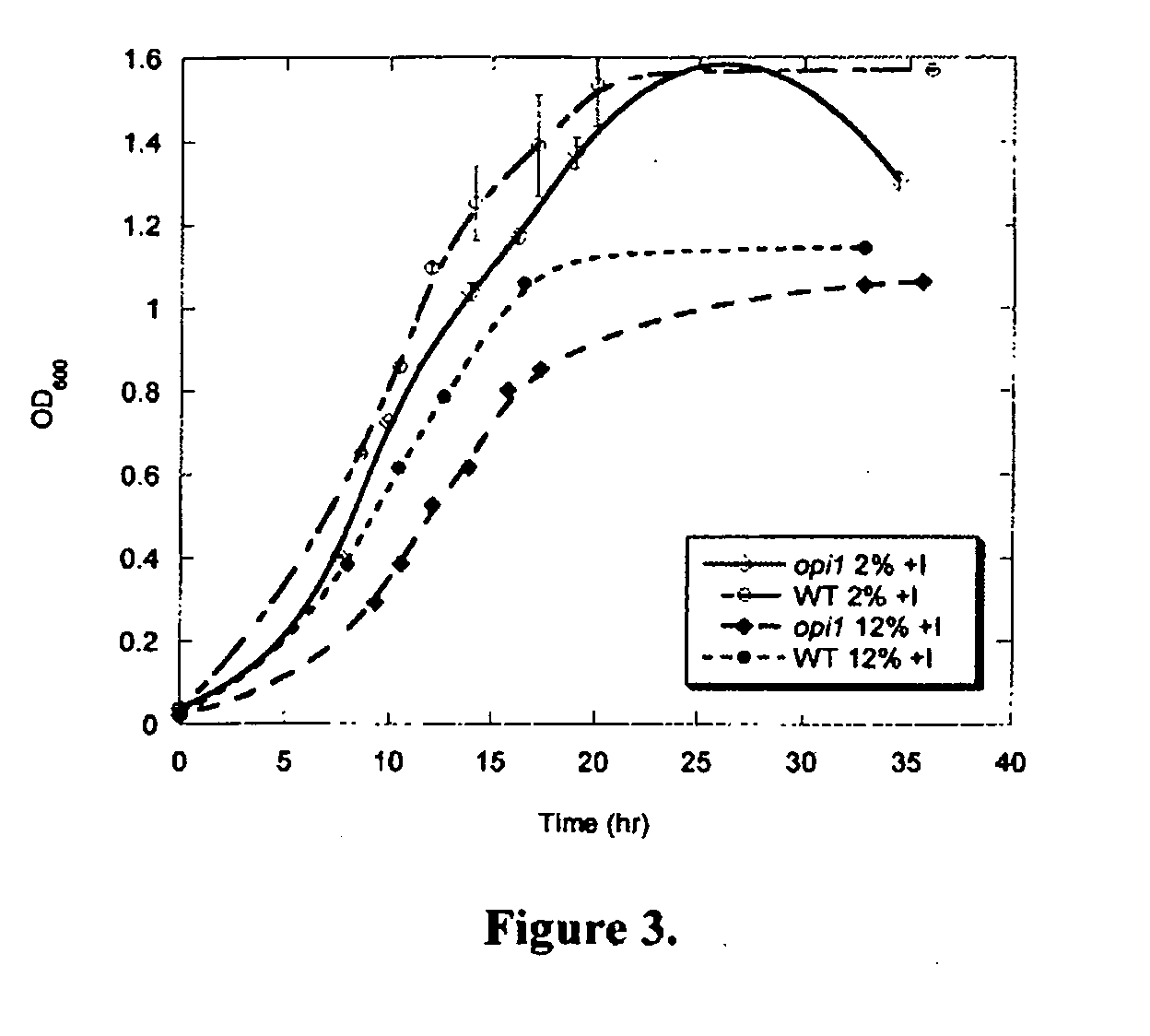Methods to improve alcohol tolerance of microorganisms
- Summary
- Abstract
- Description
- Claims
- Application Information
AI Technical Summary
Benefits of technology
Problems solved by technology
Method used
Image
Examples
example 1
Plating Assays
[0065]Values for CV are plotted versus time in FIG. 1 for the opi1 and the wild type strains after growth in −I media are. For ethanol exposure of 10 and 15%, the opi1 cells had higher CV values and the rate of decrease in CV with time was less than that observed with wild type cells. In 18% ethanol, CV values of opi1 cells fell to near 0% in the first hour after growth in −I. Similar results were obtained for the opi1 and the wild type strains after growth in +I media are (see FIG. 2). In addition, for I+, opi1 showed higher tolerance to 18% ethanol than the wild type did to 15% ethanol after growth in +I.
[0066]To model the data presented in FIGS. 1 and 2 and to estimate specific death rates a simple first-order kinetic model was fitted to the data using the nonlinear parameter estimation tool in KaleidaGraph (Synergy Software, Reading, Pa.):
y=a*e−dt (2)
where
[0067]a=initial percent cell viability at time zero
[0068]d=specific death rate, (hr−1)
The resulting curve fits...
example 2
Growth Curve Assays
[0073]Cell growth, using OD as a surrogate for cell mass, versus time is plot in FIGS. 3-6 for wild type and opi1 in +I and −I media containing 2% or 12% glucose and 0% or 5% ethanol. Error bars are also plotted for all data, representing the standard deviation of the triplicate measurements at each time point. A lower ethanol concentration than was used in the plating assays was employed because of the increased sensitivity of cell growth to ethanol and glucose (D'Amore et al., “A Study of Ethanol Tolerance in Yeast,”Crit Rev Biotechnology 9(4):287-304 (1990), which is hereby incorporated by reference in its entirety). Previous studies employing this method of evaluating ethanol tolerance used media containing various concentrations of glucose: 2% (You et al., “Ethanol Tolerance in the Yeast Saccharomyces cerevisiae is Dependent on Cellular Oleic Acid Content,”Applied Environ Microbiology 69:1499-1503 (2003), which is hereby incorporated by reference in its entir...
PUM
| Property | Measurement | Unit |
|---|---|---|
| Osmolarity | aaaaa | aaaaa |
| Osmotic shock | aaaaa | aaaaa |
Abstract
Description
Claims
Application Information
 Login to View More
Login to View More - R&D
- Intellectual Property
- Life Sciences
- Materials
- Tech Scout
- Unparalleled Data Quality
- Higher Quality Content
- 60% Fewer Hallucinations
Browse by: Latest US Patents, China's latest patents, Technical Efficacy Thesaurus, Application Domain, Technology Topic, Popular Technical Reports.
© 2025 PatSnap. All rights reserved.Legal|Privacy policy|Modern Slavery Act Transparency Statement|Sitemap|About US| Contact US: help@patsnap.com



